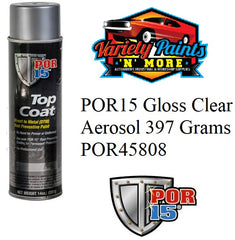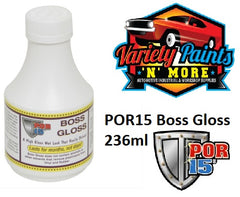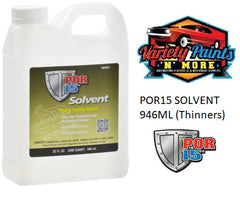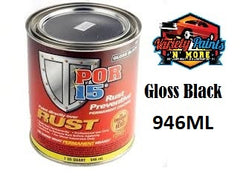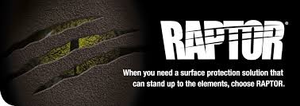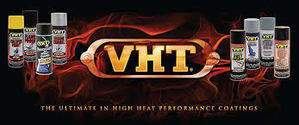POR15 AUTO FUEL TANK REPAIR KIT UPYO 25 Gallon Fuel Tank (100 Litres)
POR-15® Fuel Tank Repair Kit is more than just pouring in a quart of sealer and sloshing it around. If gum, varnish, sludge, or fuel are inside, they must be removed first.
Our POR-15® Fuel Tank Sealer, like all other sealers, will not work in a contaminated tank. Find out what the pros already know... our POR-15® Fuel Tank Repair Kit has everything you need to do the job right!

Kit Contains:
- POR-15® Cleaner Degreaser to remove gum, sludge, varnish
- POR-15® Metal Prep to remove rust & prepare tank for sealer
- POR-15® Fuel Tank Sealer to permanently seal tank
- Detailed Instructions so you'll do the job right.
DIRECTIONS
Almost all fuel tanks are dirty and have to be cleaned out before sealing. It is very diffi cult to see the dirt and contamination inside the tank, but it’s there. In English, we call this bad stuff “gum and varnish”, and it’s almost always invisible to the naked eye. If you try to seal a tank without cleaning it fi rst, the new coating will probably fail, because tank sealer won’t stick to gum and varnish. Here’s how to clean out a 25 gallon fuel tank: 1. Mix 1 quart of Marine-Clean with 1 quart of very hot water and pour it into the tank
GLOVES AND EYE PROTECTION SHOULD BE WORN AT ALL TIMES. Shake the tank, then place it in a different position every 2 hours so the solution can cover all inside surfaces. When all surfaces have been subjected to the cleaning solution, shake it again, then dump out the tank, rinse it with water, dump out the water, and start all over again. The first time you dump the solution, it’ll be very dirty; after the second solution has been discarded, the tank should be clean. Rinse the tank out with fresh hot water, drain thoroughly, then pour in the full container of Metal-Ready.
2. With the Metal-Ready in the tank, again shake, then place the tank in different positions every half hour until the entire inside of the tank has been treated with Metal-Ready. Then rinse the tank thoroughly with hot water several times and drain it. In order to get the tank completely dry, you must blow warm air into it for a long time. No tank will dry out on the inside by itself. The only way to do this job is to use forced air.
TANKS MUST BE COMPLETELY DRY INSIDE BEFORE SEALING. THE SEALER WILL NOT STICK TO A DAMP OR WET TANK.
3. Pour in the entire can of fuel tank sealer and “roll” the tank around so that all surfaces come in contact with the sealer. Then drain for at least 30 minutes to ensure that sealer has not “puddled” in tank. After you’ve done this, dump out the left-over sealer back into the can, but
DON’T PUT THE LID BACK ON THE CAN TIGHTLY OR IT MAY EXPLODE!
Leave the can open and it will harden overnight. Then throw it out the next day. Allow 72 - 96 hours for sealer to dry. Air dry tank in a well-ventilated area. Maximum cure will be reached in 96 hours. Setup time can be improved by using a low pressure blower or hair dryer (low or no heat) and circulating it through one hole in tank and out another.
PATCHING The best time to add patches on the outside of the tank is when you have fi nished drying the tank after using Metal Ready, when the holes in the tank are too big to be sealed by the sealer alone. Here’s how you do this: Paint the area where the hole is with POR-15, then place a piece of reinforcing fabric into the paint. Now paint the cloth outward from the center with more POR15. The next day or 5 hours later, paint it again. You have now sealed the tank from both the inside and the outside
And remember, whenever you want to seal a tank, you must use Metal-Ready on the inside and/or the outside, because the adhesion must be perfect. After the tank is sealed, wait at least 5 days before putting fuel into it.
OLD SEALER Sometimes you will be asked how to seal a tank that was sealed years ago with some other sealer that has now failed. In this case, you must use our paint stripper fi rst to remove that old sealer, and a gallon of stripper should do it properly. First, pour in about a quart of stripper and let it work on each inside surface. It may take 4 strippings to do the job completely.
The old finish may come loose in chunks or pieces or strips, so a long tweezertype tool is helpful for removal. After the stripping job is done, the tank should be rinsed out with hot water and then cleaned with Marine-Clean. This is not easy work, but it’s the only way to do the job right. People who follow our directions perfectly always get a perfect job, no exceptions. Special care must be taken to make sure the sealer doesn’t clog up feeder lines or other tubes inside the tank, and the tank must be propped before drying so the sealer doesn’t “puddle” in places where it could cause problems.
WHO USES FUEL TANK SEALER? People who restore, rebuild, or repair cars, boats, or other vehicles; companies with fuel storage tanks; non-restoration people who have fuels tanks in need of repair.



